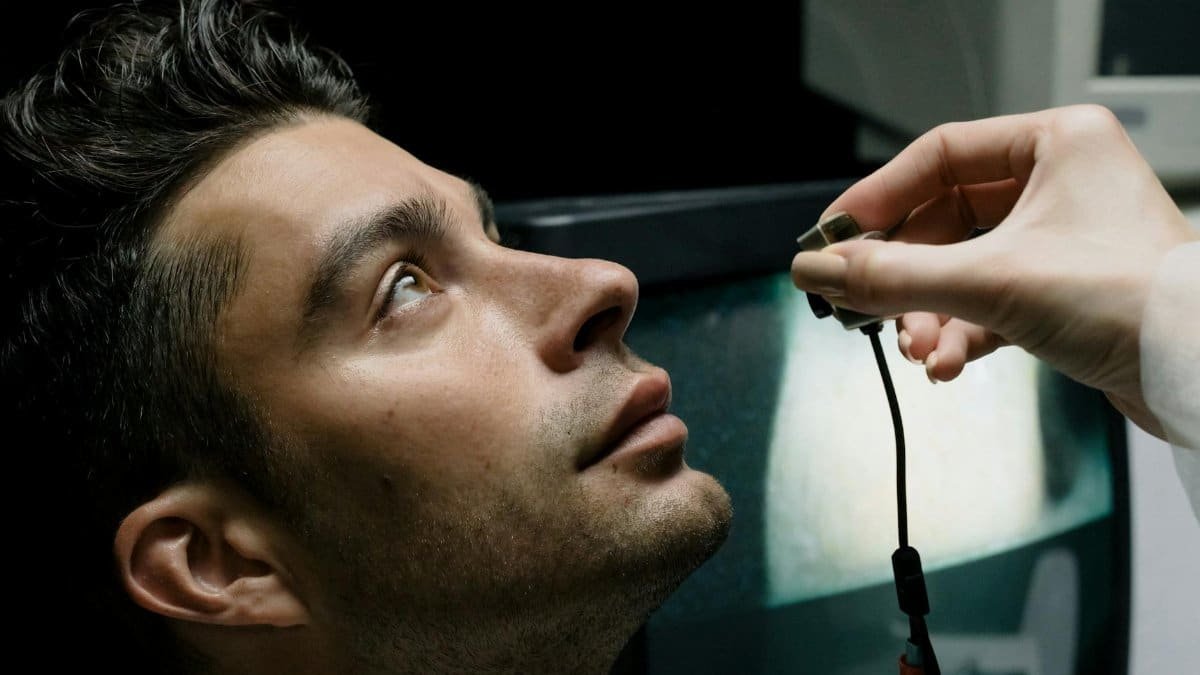Imagine a moment so quiet, so focused, that the world seems to narrow to just two sets of eyes. This isn’t mere daydreaming—it’s a window into eye gazing science, a growing field that examines how sustained eye contact can forge deep emotional bonds and even alter brain activity. Researchers and everyday people alike are turning to this practice, not just for connection, but for measurable shifts in well-being. Across the U.S., from therapy rooms in Seattle to wellness retreats in Sedona, the idea is taking hold: looking into another’s eyes, without words, might unlock something primal and healing. What started as a ritual in spiritual circles has edged into labs, where scientists are mapping its effects on empathy, stress, and trust. This isn’t about romance alone—it’s about how we see, and are seen, in a fragmented world.
The Roots of Eye Gazing Science

Long before brain scans and lab coats, humans understood the power of a steady gaze. Ancient practices, from tantric traditions in India to meditative exercises in Buddhist communities, often centered on locking eyes to build intimacy or spiritual connection. But today, eye gazing science seeks to ground these old instincts in data. Studies suggest that prolonged eye contact—typically defined as 2 to 10 minutes of uninterrupted focus—can trigger a cascade of neurological responses. It’s not just folklore; it’s biology. Oxytocin, often called the “bonding hormone,” spikes during these moments, mimicking the chemical rush of a mother gazing at her newborn. Researchers at institutions like the University College London have noted how such interactions can lower cortisol levels, easing stress in measurable ways.
This isn’t abstract. Picture a group of strangers in a controlled study, paired off, sitting knee-to-knee. They’re told to simply look, not speak. Minutes pass. Some fidget at first, then settle. Post-session surveys often reveal a shared sense of vulnerability—and trust. It’s as if the act of being seen, without judgment, rewires something fundamental.
Neural Pathways of Connection

Why does a gaze feel so potent? The answer lies in the brain. Eye gazing science points to the activation of mirror neurons—cells that fire both when we act and when we observe others doing the same. These neurons help us “feel” another’s emotions, creating a silent dialogue. A 2015 study from the National Library of Medicine found that mutual gazing increases synchronization between two people’s brain activity, particularly in areas tied to empathy and social cognition. In simpler terms, looking into someone’s eyes can make your mind hum in tune with theirs.
Think of it as a feedback loop. You see sadness in their expression; your brain mirrors it, nudging you to respond with care. This isn’t magic—it’s evolution. Humans, as social creatures, likely developed this sensitivity to survive, to read threats or alliances in a glance. Today, though, it’s being harnessed deliberately, in settings from couples’ therapy to corporate team-building.
Eye Gazing in Modern Therapy

Step into a therapist’s office in 2025, and you might be asked to do more than talk. Eye gazing is emerging as a tool for healing relational wounds, especially in couples’ counseling. Therapists guided by research from the American Psychological Association note that sustained eye contact can rebuild trust after conflict, often faster than words alone. It strips away verbal defenses, leaving room for raw connection. One therapist described a session where a couple, silent and staring, broke into tears after months of cold distance. “They saw each other again,” she said.
This isn’t without challenge. For some, holding a gaze feels invasive, even threatening. Cultural norms play a role—direct eye contact can signal aggression in some contexts, intimacy in others. Therapists must navigate these layers, ensuring the practice feels safe. Yet when it works, the impact lingers, often reshaping how partners communicate outside the room.
The Stress-Reducing Power of a Look

Eye gazing science also touches on something many Americans crave: relief from stress. With anxiety rates climbing—over 30% of adults report symptoms yearly, per recent data from the National Institute of Mental Health —simple tools matter. Sustained eye contact, studies show, can calm the nervous system. It slows heart rates and deepens breathing, mimicking meditation’s effects. In one experiment, participants who gazed into a partner’s eyes for just four minutes reported feeling more grounded than those who stared at a wall.
This resonates in a culture of distraction. Screens dominate attention, pulling eyes downward. A deliberate gaze, then, becomes a quiet rebellion—an act of presence. Online discussions often highlight this hunger for real connection, with one person sharing anonymously how eye gazing during a workshop felt like “a weight lifting.” It’s not a cure-all, but it’s a start.
Challenges and Misconceptions

Not everyone’s sold on eye gazing science. Skeptics argue it’s overhyped, a repackaged spiritual trend lacking rigorous evidence. While studies show promise, sample sizes are often small, and long-term effects remain unclear. Critics also warn of discomfort—staring can feel forced or awkward, especially for those with social anxiety. There’s a risk, too, of misreading cues; what feels connective to one person might seem intrusive to another.
Then there’s the pop-culture lens. Eye gazing gets tied to “soulmate” clichés, diluting its scientific grounding. It’s not about finding “the one” through a stare—it’s about fostering empathy, regardless of relationship. Clearing up these misconceptions matters if the practice is to gain wider acceptance, especially in clinical or workplace settings where it could do real good.
Everyday Applications for Everyone

Eye gazing science isn’t just for labs or therapy. It’s slipping into daily life. Parents might try brief gazes with kids to build trust without words. Friends use it to deepen conversations, setting aside phones for a minute of real focus. Even workplaces experiment with it in trust-building exercises, though often with mixed reactions—some employees roll their eyes, others feel unexpectedly moved.
Starting small helps. Try 30 seconds with a willing partner, in a quiet space. Notice the urge to look away, and gently resist it. There’s no need for intensity; a soft gaze works best. Over time, it can shift how you relate—not just to others, but to yourself. It’s a reminder that connection, even fleeting, is wired into us. And in a world that often feels split apart, that’s no small thing.
